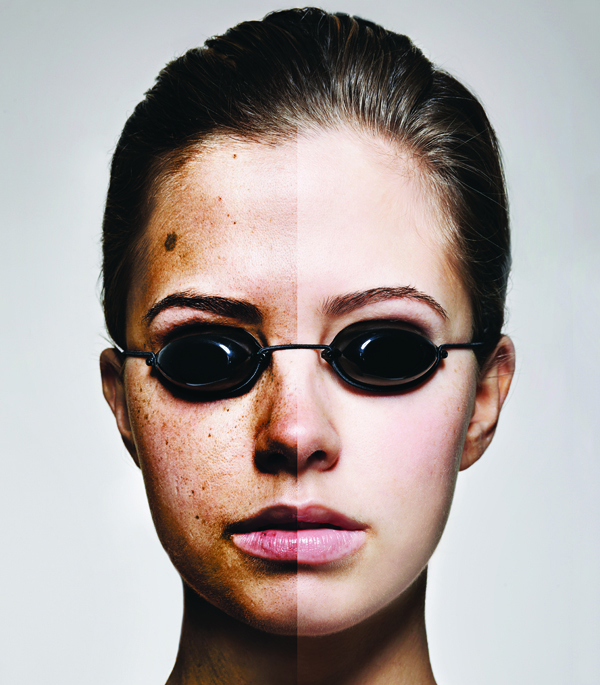Burn Notice: How the Sun Can Damage Your Health

A UV light reveals damaged skin on a healthy-looking face. (Photo via Getty Images)
Each summer, legions of locals expose their pasty parts to the sun, hoping to achieve a pleasing golden-brown hue. Science, however, suggests that tanning is more human sacrifice than beauty enhancement.
Especially here in Massachusetts. The American Cancer Society expects a 26 percent rise in the number of melanoma cases in the state this year, and tiny Nantucket County rates among the top five counties in the nation for skin cancer, with a rate that’s 146 percent above the national average.
What the heck is going on? Apparently, despite dermatologists’ tireless admonishments, the deep, dark tan remains a summertime staple. That’s a problem, which Mathew Avram, director of Mass General’s Dermatology Laser and Cosmetic Center, explains this way: Sun, plus more sun, equals more risk. The more time you spend in it, the more you’re increasing your exposure to radiation. Period.
What’s also making headlines these days is the newest evidence of how the sun accelerates aging. Earlier this summer, a trucker made it into the New England Journal of Medicine when he unintentionally demonstrated the cumulative effects of UVA. (Put simply, UVA rays age your skin, UVB rays burn it.) A photo of his face, which became an Internet sensation, revealed that after 28 years of sun exposure from driving, the left cheek showed curdled wrinkles and deep folds, while the right side merely sagged.
Despite all the evidence, we’re out there every summer with our towels, beach chairs, and books, soaking up radiation at record rates. “We as a society do not take skin cancer seriously,” says Maryellen Maguire-Eisen, founder of the Children’s Melanoma Prevention Foundation in Hingham. “We really all have our heads in the sand about it.”
THINK YOU’RE SUN SMART?
We deconstruct five common misconceptions about sun exposure.
1. A tan is a healthy glow.
The truth:By most estimates, the sun is directly responsible for up to 90 percent of visible changes we associate with aging, including wrinkles and saggy skin.
2. Base tans prevent burns.
The truth: “When you get a tan, that’s equal to an SPF 4, so you do get some protection,” Maguire-Eisen says. Then again, sunscreens with an SPF lower than 15 now get a “Skin Cancer/Skin Aging Alert” from the FDA. That base tan should come with the same warning.
3. Tanning beds are safe.
The truth: According to the Skin Cancer Foundation, indoor UV tanners are 74 percent more likely to get melanoma than those who have never done so.
4. Sunscreen has toxic chemicals.
The truth: There’s some evidence that the body uptakes oxybenzone, a possible hormone disrupter found in many sunscreens, but the FDA and the American Academy of Dermatology have both deemed it safe — though they do warn that sunscreen should be kept away from damaged or broken skin.
5. Spray tanning is healthiest.
The truth: Spray tans contain a chemical called dihydroxyacetone, which may be harmful if inhaled.

